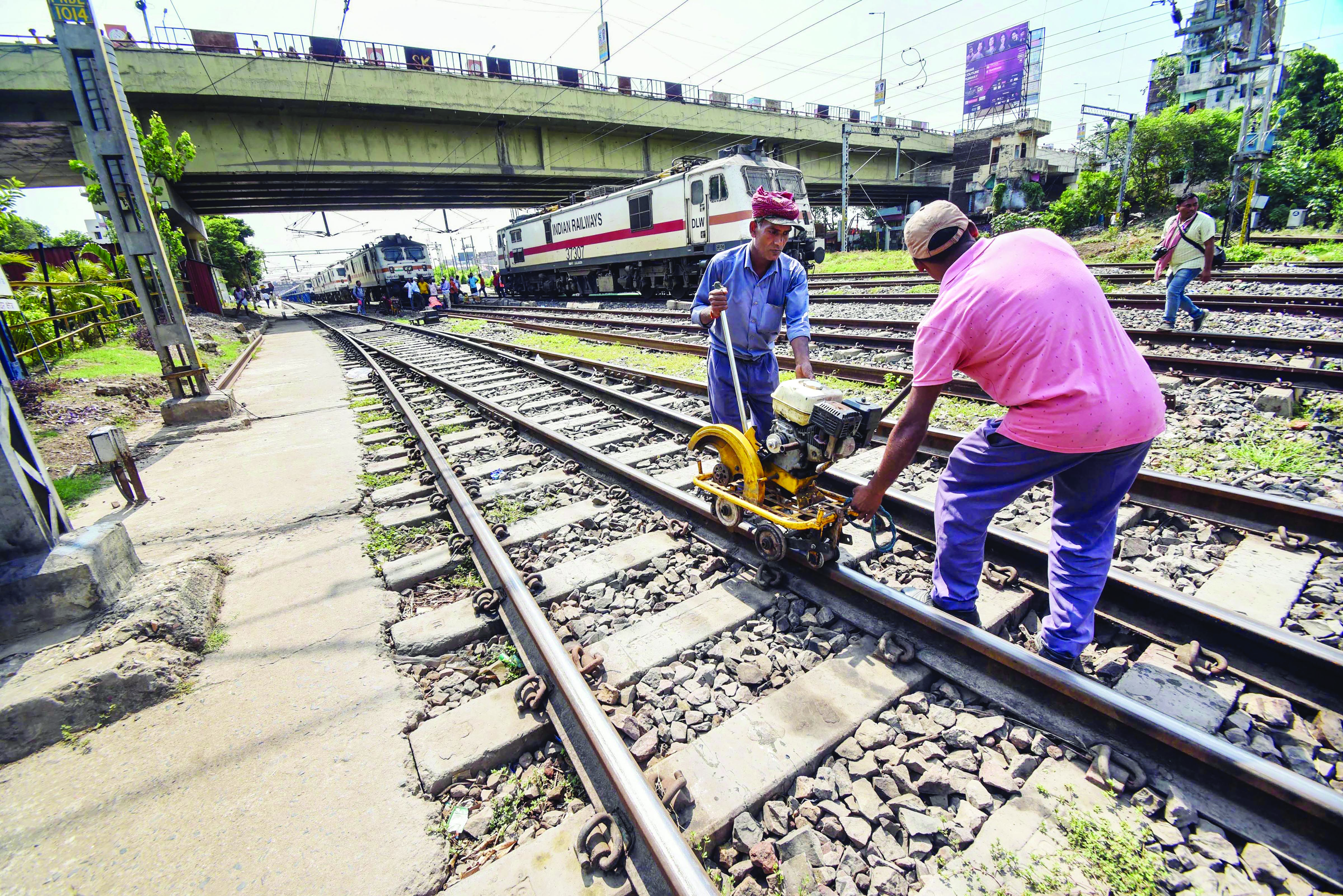Cabinet approves two major Railway projects worth Rs 6,798 crore

NEW DELHI: The Cabinet Committee on Economic Affairs (CCEA), chaired by Prime Minister Narendra Modi, on Thursday approved two significant railway infrastructure projects: the doubling of the Narkatiaganj-Raxaul-Sitamarhi-Darbhanga and Sitamarhi-Muzaffarpur sections, and the construction of a new railway line from Errupalem to Namburu via Amaravati. These projects aim to enhance connectivity, reduce logistics costs, and contribute to environmental sustainability.
Railway Minister Ashwini Vaishnaw informed the press in the national capital during a briefing on the cabinet decision. He stated that the total investment for these projects is estimated at Rs 6,798 crore, and both are expected to be completed within the next five years. These projects, which span three states—Bihar, Andhra Pradesh, and Telangana—will not only modernise the Indian railway network but also contribute to job creation, economic growth, and the country’s climate goals, he said.
The first project focuses on doubling the Narkatiaganj-Raxaul-Sitamarhi-Darbhanga and Sitamarhi-Muzaffarpur railway lines, covering a total distance of 256 kilometres. This upgrade will strengthen connectivity between Nepal, the northeastern regions of India, and key border areas, improving both passenger and goods train services.
The increased capacity will ease traffic congestion and reduce delays, facilitating smoother operations on one of India’s busiest sections. Moreover, the doubling of these tracks will bolster socio-economic growth in the region by making the transportation of goods, such as agricultural products, fertilizers, and industrial commodities, more efficient.
This section plays a crucial role in serving Sitamarhi and Muzaffarpur, two aspirational districts identified by the government for focused development. The enhanced connectivity is expected to benefit approximately 388 villages and a population of around 9 lakh. Additionally, the upgrade will help streamline the movement of freight, adding an estimated 31 million tonnes per annum (MTPA) of capacity, thus improving supply chains and accelerating economic growth in these areas. The second project involves the construction of a new 57-kilometre railway line between Errupalem and Namburu, passing through Amaravati, the proposed capital of Andhra Pradesh. This new line will traverse the NTR Vijayawada and Guntur districts of Andhra Pradesh, as well as Khammam district in Telangana. The project will connect approximately 168 villages and serve a population of around 12 lakh people.
The construction of this new line is particularly important as it will provide direct connectivity to Amaravati, boosting mobility and industrial development in the region. The new line will feature nine new stations, improving access to transportation for rural and semi-urban areas, thus supporting regional growth. The enhanced mobility will also facilitate better service reliability and operational efficiency for Indian Railways, meeting the growing demand for transportation in this emerging industrial hub.
Both projects align with the broader goals of the PM-Gati Shakti National Master Plan, which focuses on creating a seamless network for the movement of goods and people across India. Together, the projects will expand the Indian Railways network by 313 kilometres, connecting unserved and underserved areas while enhancing the capacity of existing lines.
These projects will have far-reaching benefits beyond improving connectivity. By facilitating better transport networks, they are expected to lower logistics costs, which in turn will reduce the cost of goods and services. Additionally, they will help minimise India’s reliance on oil imports by promoting railways as an environmentally friendly, energy-efficient mode of transport.
The environmental benefits of these projects are particularly significant. The capacity upgrades are expected to reduce carbon dioxide (CO2) emissions by approximately 168 crore kilograms, which is equivalent to the carbon sequestration achieved by planting seven crore trees. This will not only help India in its journey toward achieving climate goals but also contribute to global efforts in combating climate change.
Meanwhile, Railway Minister Ashwini Vaishnaw claimed that these projects will generate direct employment and are expected to create approximately 106 lakh human-days of work, providing a much-needed boost to local economies. The socio-economic benefits of the projects will extend to improved infrastructure in rural areas, leading to greater employment and self-employment opportunities, in line with Prime Minister Modi’s vision of an “Atmanirbhar Bharat” (self-reliant India), he asserted.
The minister also mentioned that the expanded railway network will play a key role in the transportation of essential commodities, including agricultural products, fertilisers, coal, iron ore, steel, and cement. The smooth flow of goods will help industries become more competitive by reducing transportation delays and costs. In turn, this will create a more efficient, interconnected economy.
The Modi government also claimed that these two railway projects represent a significant step toward transforming India’s railway infrastructure and promoting economic growth. By improving connectivity across three states and serving both urban and rural populations, the projects will generate employment, reduce logistics costs, and contribute to environmental sustainability.



